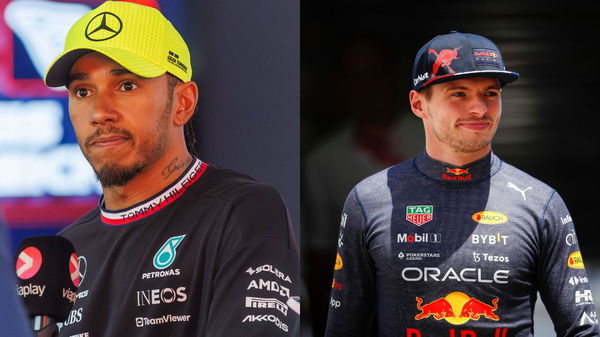
via Imago
Image Courtesy: Imago Lewis Hamilton (L) and Max Verstappen (R)

via Imago
Image Courtesy: Imago Lewis Hamilton (L) and Max Verstappen (R)
Ground-effects regulations in Formula 1 have unintentionally impacted overtaking opportunities at low-drag circuits like Monza, as explained by McLaren Team Principal Andrea Stella. The 2022 design rulebook shift from complex top surfaces to ground effects aimed to reduce dirty air and enhance car following, resulting in a 30% reduction in dirty air and improved overtaking potential in certain tracks, such as Hungary.
Despite these advancements, challenges have arisen due to the FIA reducing the length of DRS zones in early races and the dominant performance of Red Bull and Max Verstappen, leading to criticism about the lack of excitement in races. However, these issues are not attributed to the ground-effects switch but rather to straight-line limitations observed in low-drag tracks like Jeddah, Spa, and Monza.
Andrea Stella has explained how the new ground-effects #Formula1 regulations can unintentionally work to reduce overtaking opportunities at low-drag circuits such as Monza.
“I think what we have observed already last year with this new generation of cars..”#F1 #McLaren #MCL60 pic.twitter.com/xdsr9YXj4o
— McLaren F1 News 🏴🇦🇺 (@TheMcLarenZone) August 7, 2023
ADVERTISEMENT
Article continues below this ad
Lewis Hamilton once mentioned that overtaking remained challenging, suggesting that the ground effects did not entirely deliver as expected. According to Stella, ground-effect cars now cut a cleaner path through the air. This reduces the effectiveness of the slipstream and makes overtaking in straight-line sections more difficult. Nonetheless, the overall impact of the new car generation has been positive, as it has significantly improved the ability to follow cars closely through corners, creating more thrilling racing opportunities. As per a tweet by @TheMclarenZone, Stella said:
“I think what we have observed already last year with this new generation of cars is it’s definitely easier to follow in the corners. When it comes instead to configurations like [Spa] or Monza where you need to have a lot of towing effect to overtake. I think with this generation of cars you have less, let me call it, suction from the car ahead. So, in this kind of circuit, it has actually become slightly more difficult possibly.”
The introduction of ground-effects regulations in Formula 1 has brought both benefits and challenges. While it has improved overtaking through corners, concerns remain regarding straight-line overtaking at low-drag circuits. The FIA continues to work on leveling the playing field among teams, aiming for more exciting and competitive races in the future.
McLaren and the aerodynamic challenge: Pursuing the perfect balance
ADVERTISEMENT
Article continues below this ad
McLaren’s pursuit of the perfect aerodynamic balance for their cars remains an ongoing challenge. The ideal combination of front and rear downforce is crucial for drivers to perform at their best without encountering extreme oversteer or understeer issues. Unfortunately, McLaren seems to be struggling with this aspect.

via Reuters
Formula One F1 – Azerbaijan Grand Prix – Baku City Circuit, Baku, Azerbaijan – April 28, 2023 McLaren’s Oscar Piastri during qualifying REUTERS/Lisi Niesner
The difficulties with the MCL60’s aerodynamics are evident. The car sometimes requires coaxing to handle corners effectively, demanding earlier turn-ins. This suggests that the current downforce levels might not be optimal, as increased downforce would provide better grip and stability. In a recent McLaren YouTube short, Piastri candidly acknowledged this issue. He stated, “Of course, a car that doesn’t oversteer or understeer is perfect, but we very rarely get that!” Piastri’s observations align with his teammate Lando Norris‘s earlier comments, shedding light on the persisting balancing problem that has haunted the team for five years.
ADVERTISEMENT
Article continues below this ad
WATCH THIS STORY: Lando Norris Evokes Senna Comparisons with Unique Quality, Shines Bright at British Grand Prix
Norris emphasized the significant impact of an imbalanced car on race day. He particularly highlighted the urgency of resolving their aerodynamic challenges. The British-Belgian driver pointed out that if the car’s balance isn’t right; it results in greater setbacks during the race, especially since new tires have a substantial impact on performance. The team is aware of the consequences and is striving to find a solution to these long-standing aerodynamic issues.

